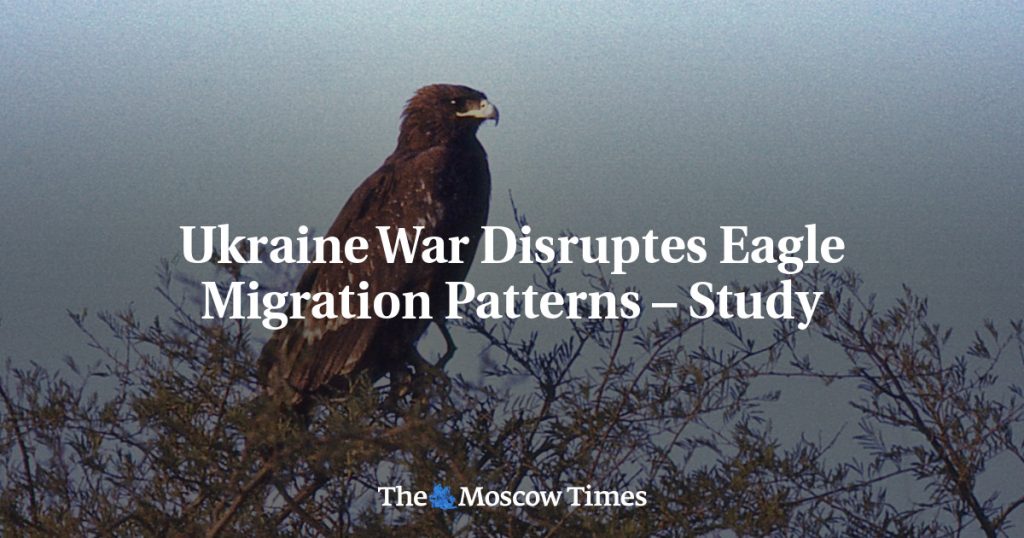A recent study has found that Russia’s invasion of Ukraine has had a significant impact on the migratory patterns of greater spotted eagles, a vulnerable species. The war has forced these eagles to fly longer distances to reach their breeding grounds, with an average increase of 85 kilometers in areas affected by the conflict. This species typically migrates through September to November in the fall and February to April in the spring.
Researchers from the United Kingdom and Estonia observed that male greater spotted eagles experienced a greater increase in migration flying time compared to females. Males flew an additional 56 hours on average, while females flew an additional 53 hours. Prior to the war, 90% of the eagles made stopovers in Ukraine. However, in 2022, only one-third of the birds stopped in Ukraine, indicating a change in their migration patterns due to the conflict.
The study highlighted that the longer fly times and fewer stopover locations have likely led to exhaustion among the eagles in war-impacted areas, potentially resulting in “sublethal” effects. This means that the eagles are at a higher risk of dying due to various causes as a result of the changes forced by the war. It is concerning that the disruptions caused by the invasion could have long-term consequences for the survival and well-being of this vulnerable species.
The greater spotted eagle’s breeding grounds span from Eastern Europe to the Far East Russia’s Primorye region, making their migration an essential part of their life cycle. The war has now disrupted this critical process, impacting the eagles’ ability to successfully reach their breeding grounds and rear their young. The migration changes brought about by the conflict have placed additional stresses on the already vulnerable species, potentially leading to further population declines.
It is crucial for conservation efforts to monitor the impact of the war on the greater spotted eagles and take appropriate measures to mitigate the negative effects. This may involve creating safe corridors for the eagles to migrate through, providing additional resources to support their movement, and raising awareness about the importance of protecting these birds. The study serves as a call to action for conservationists and policymakers to address the challenges faced by migratory species in conflict zones and ensure their long-term survival.
Overall, the findings of the study underscore the far-reaching consequences of armed conflicts on wildlife and highlight the urgent need to protect vulnerable species like the greater spotted eagle. The war in Ukraine has not only affected human populations but has also had a profound impact on the natural world, disrupting the delicate balance of ecosystems and endangering the survival of various species. By understanding and addressing the challenges faced by migratory birds, we can work towards preserving biodiversity and ensuring a sustainable future for both nature and humanity.


